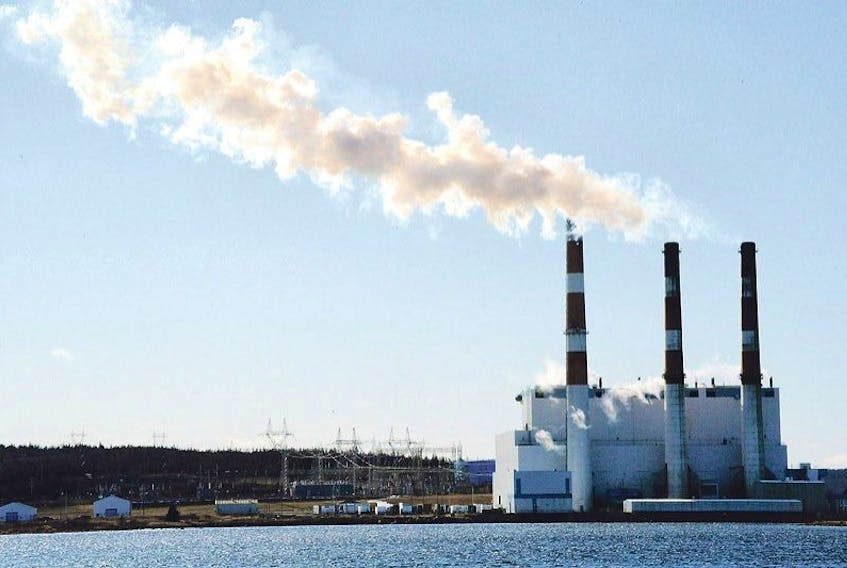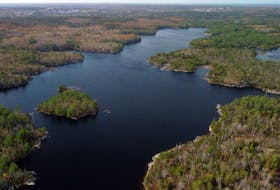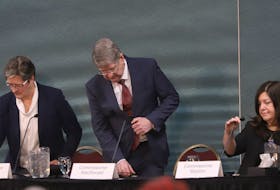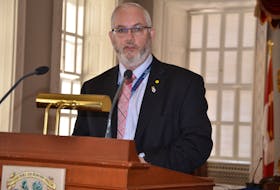It’s still here. And it’s likely staying for a while.
One of the crucial selling points for the Muskrat Falls project was that the oil-burning Holyrood Generating Station would go into standby mode — something that was supposed to have happened two years ago.

Not only would the closure clean up the atmosphere by reducing pollution, but the savings involved in not buying oil to fuel it would be significant.
But in the quiet background of the province’s Public Utilities Board, a back-and-forth exchange of letters is slowly making clear that a closed-down Holyrood is anything but imminent.
I’ve already written about the PUB’s consultant, Liberty Consulting Group, pointing out that Newfoundland and Labrador Hydro should look at keeping Holyrood indefinitely as backup generation. Liberty points out that it believes Nalcor and Hydro have significantly underestimated the repair time for problems on the Labrador Island Link (LIL), the hydro line that’s supposed to bring Muskrat Falls power to the Northeast Avalon.
(One example? Just last week, the RCMP issued a news release about a communications cable being shot at in St. Mary’s Bay, something that happens pretty much every hunting season. Liberty points out that there’s a high possibility of such vandalism occurring on the LIL. While Nalcor says it would take eight to 24 hours to repair, Liberty says that, depending on weather conditions, one to five days would be a more accurate timeframe.)
Now, Hydro’s confirmed in its own communication to the PUB that Holyrood — or something else — is going to be needed.
The utility also says it is now preparing for a third-party assessment of the Holyrood plant “to determine what would be required to extend the life of the Holyrood TGS generating assets.”
“Contingency plans have been developed for capital and operational activities at the Holyrood (Thermal Generating Station) for extensions of one to two years. These contingency plans will help to ensure reliable operation of the Holyrood TGS in the event of further delays in the Muskrat Falls project integration and/or reliability issues after integration,” the utility wrote. “Hydro is confident that these plans can be implemented safely and reliably if a decision is made to extend steam operation at the Holyrood TGS. Hydro is also working on contingency plans for longer term indefinite operation of the Holyrood TGS, including possible standby operation.”
The utility also says it is now preparing for a third-party assessment of the Holyrood plant “to determine what would be required to extend the life of the Holyrood TGS generating assets.”
Keep in mind, Holyrood is not a microwave oven — it doesn’t just turn on. Starting the system from scratch — a “cold start” — can easily take more than a day.
Not that useful if the lights go out.
That’s why, in winter, Holyrood units are kept ticking over, burning oil and supplying energy even if the system doesn’t need the power.
We pay in three ways. On the one hand, we pay for continued capital and operating expenses, and on the other, we pay for oil. (Increases in oil prices are behind the seven per cent increase in electricity prices that was put in place on Oct. 1, for example.)
The third way is less obvious. Since we haven’t started paying for the Muskrat Falls project, each month that goes by is another month’s unpaid interest piling up on top of the construction costs and the already-substantial interest we’ll be paying for the next few decades.
If Holyrood has to stay, we’ll almost certainly be on the hook for brand new bills to repair the aging plant and keep it running. When Muskrat Falls was a glimmer in politicians’ eyes, the estimate needed for upgrading and keeping the plant was $582 million to be spent by 2017. (That price tag was a key element in justifying the need for Muskrat, so the number might be hopelessly inflated.)
If we actually have to run it flat-out, we’ll be on the hook for additional oil costs, too.
And all of those costs will be in addition to the bills we have to pay for Muskrat Falls.
Not quite the bill of goods we were sold.
Russell Wangersky’s column appears in SaltWire publications across Atlantic Canada. He can be reached at [email protected] — Twitter: @wangersky
MORE FROM RUSSELL WANGERSKY
• Out of the mouths of babes
• The reinforcement of your own personal echo chamber









